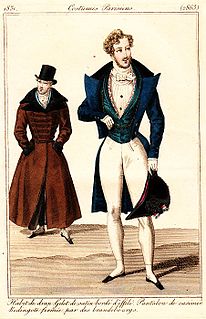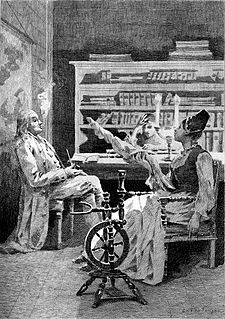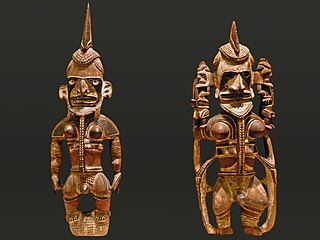 W
WA bearded lady is a female, with a naturally occurring beard normally due to the condition known as hirsutism or hypertrichosis. Hypertrichosis causes people of either sex to develop excess hair over their entire body, while hirsutism is restricted to females and only causes excessive hair growth in the 9 body areas mentioned by Ferriman and Gallwey.
 W
WBishōnen is a Japanese term literally meaning "beautiful youth (boy)" and describes an aesthetic that can be found in disparate areas in East Asia: a young man of androgynous beauty. This word originated from the Tang dynasty poem Eight Immortals of the Wine Cup by Du Fu. It has always shown the strongest manifestation in Japanese pop culture, gaining in popularity due to the androgynous glam rock bands of the 1970s, but it has roots in ancient Japanese literature, the homosocial and homoerotic ideals of the medieval Chinese imperial court and intellectuals, and Indian aesthetic concepts carried over from Hinduism, imported with Buddhism to China. Today, bishōnen are very popular among girls and women in Japan. Reasons for this social phenomenon may include the unique male and female social relationships found within the genre. Some have theorized that bishōnen provide a non-traditional outlet for gender relations. Moreover, it breaks down stereotypes surrounding feminine male characters. These are often depicted with very strong martial arts abilities, sports talent, high intelligence, dandy fashion, or comedic flair, traits that are usually assigned to the hero/protagonist.
 W
WThe Blitz Kids were a group of people who frequented the Tuesday club-night at Blitz in Covent Garden, London in 1979-80, and are credited with launching the New Romantic subcultural movement. Steve Strange and Rusty Egan co-hosted these exclusive nights without giving them a name, according to Strange's autobiography, and publicised them solely by word of mouth. An emphasis on style was ensured by enforcing a strict dress code at the door. Crucially, the Blitz lay between two art colleges and it became a testbed for student fashion designers who set London ablaze during the 1980s. These included Stephen Jones, Kim Bowen, Fiona Dealey, Stephen Linard, David Holah, Stevie Stewart, John Galliano, Darla Jane Gilroy and more. The Blitz began making headlines thanks to its outrageous styles of clothes and make-up for both sexes, subsequently documented by Gary Kemp in his 2009 first-person book, I Know This Much, and by Graham Smith and Chris Sullivan in their 2011 book We Can Be Heroes: London Clubland 1976-1984.
 W
WA dandy is a man who places particular importance upon physical appearance, refined language, and leisurely hobbies, pursued with the appearance of nonchalance, in his cult of the Self. A dandy could be a self-made man who strove to imitate an aristocratic lifestyle despite coming from a middle-class background, especially in late 18th- and early 19th-century Britain.
 W
WEffeminacy is the manifestation of traits in a boy or man that are more often associated with feminine behavior, mannerism, style, or gender roles rather than with traditionally masculine behavior, mannerisms, style or roles.
 W
WSocial rules typically restrict people's dress according to gender. Trousers were traditionally a male form of dress, frowned upon for women. However, during the 1800s, female spies were introduced and Vivandières wore a certain uniform with a dress over trousers. Women activists during that time would also decide to wear trousers, for example Luisa Capetillo, a women's rights activist and the first woman in Puerto Rico to wear trousers in public.
 W
WFop became a pejorative term for a foolish man excessively concerned with his appearance and clothes in 17th century England. Some of the many similar alternative terms are: coxcomb, fribble, popinjay or dandy, fashion-monger, and ninny. Macaroni was another term of the 18th century more specifically concerned with fashion.
 W
WHatshepsut was the fifth pharaoh of the Eighteenth Dynasty of Egypt. She was the second historically confirmed female pharaoh, after Sobekneferu.
 W
WIt's Pat is a 1994 American comedy film directed by Adam Bernstein and starring Julia Sweeney, Dave Foley, Charles Rocket, and Kathy Griffin. The film was based on the Saturday Night Live (SNL) character Pat, created by Sweeney, an androgynous misfit whose sex is never revealed.
 W
WThe Rebis is the end product of the alchemical magnum opus or great work.
 W
WŠauška was a Hurrian goddess who was also adopted into the Hittite pantheon. Her name has a Hurrian origin and means the great or magnificent one.
 W
WSéraphîta is a French novel by Honoré de Balzac with themes of androgyny. It was published in the Revue de Paris in 1834. In contrast with the realism of most of the author's best known works, the story delves into the fantastic and the supernatural to illustrate philosophical themes.
 W
WSexual Personae: Art and Decadence from Nefertiti to Emily Dickinson is a 1990 work about sexual decadence in Western literature and the visual arts by scholar Camille Paglia, in which she addresses major artists and writers such as Donatello, Sandro Botticelli, Leonardo da Vinci, Edmund Spenser, William Shakespeare, Johann Wolfgang von Goethe, Samuel Taylor Coleridge, Lord Byron, Emily Brontë, and Oscar Wilde. Following Friedrich Nietzsche, Paglia argues that the primary conflict in Western culture is between the binary forces of the Apollonian and Dionysian, Apollo being associated with order and symmetry, and Dionysus with chaos, disorder, and nature. The book received critical reviews from numerous feminist scholars, but was praised by numerous literary critics.
 W
WA tomboy is a girl who exhibits characteristics or behaviors considered typical of a boy. Common characteristics include wearing masculine clothing and engaging in games and activities that are physical in nature and are considered in some cultures to be unfeminine, or the domain of boys.
 W
WTumtum is a term that appears in Jewish Rabbinic literature. It usually refers to a person whose sex is unknown because their genitalia are covered or "hidden" or otherwise unrecognizable. Although they are often grouped together, the tumtum has some halachic ramifications distinct from those of the androgynos (אנדרוגינוס), who has both male and female genitalia. Although tumtum does not appear in the Scripture, it does in other literature. Reform Rabbi Elliot Kukla writes, "The tumtum appears 17 times in the Mishna; 23 times in the Tosefta; 119 times in the Babylonian Talmud; 22 times in the Jerusalem Talmud and hundreds of times in midrash, commentaries, and halacha."
 W
WUli figures are wooden statues from New Ireland in Papua New Guinea. Like their neighbors to the north and south, the artistic traditions of the peoples of central New Ireland formerly focused largely around mortuary rites. In contrast to the intricate malagan carvings of the north, artists in central New Ireland produced less ornate but more permanent figures known as uli, which were kept and reused many times. No longer made today, uli were displayed as part of lengthy fertility rites involving the exhumation and reburial of human skulls, which accompanied the planting of sacred plants.